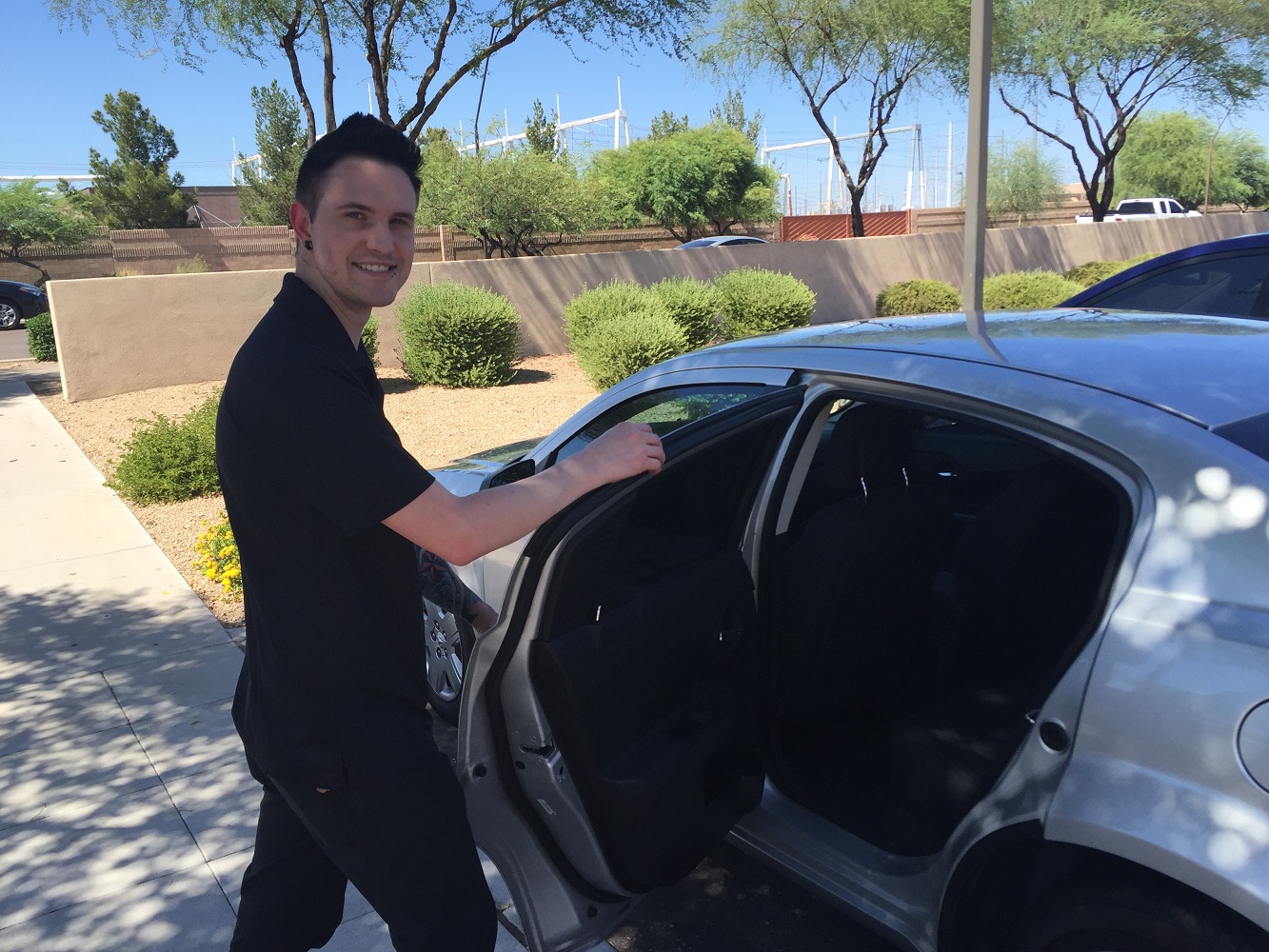
When Dan Davis’ boss told him the company would be closing for two weeks for remodeling, he wasn’t sure he wanted to relocate temporarily to another Valley location, an option he got when the shutdown was announced.
Instead, Davis asked himself a question—why not sign on as a part-time driver for Lyft, the No. 2 alternative-ride service that he’d been considering anyway.
It was an easy choice. Davis tapped out the number on his cellphone and his entrepreneurial adventure was quickly underway.
Starting as a ride-sharing driver was easy, Davis said. All that was required were a few simple steps: complete an online app; talk briefly face-to-face with a manager; show that your car is of 2006 vintage or newer; produce a current insurance card; and, finally, let an inspector ride along on a test drive.
Finally, there was the matter of a criminal-records lookup, but since Davis had no drunken-driving or other infractions, that also was no obstacle—unlike a friend whose background check listed a pre-18 arrest that apparently disqualified him in the unrelenting eyes of Lyft’s safety managers.
The time had arrived: Davis was ready to hit the road.
As the driving gig became a daily routine, Davis found that he liked the flexibility of working only when the spirit moved him. “I could choose my hours and be available when I wanted.”
He also found that he was reimbursed after every trip. “You didn’t have to wait two weeks for a paycheck.”
Working as a ride-sharing driver has its ups and downs, advised Davis, with the “downs”—more correctly described as “down times”—filling up most of the day.
“When you decide you want to be on the clock, you go to the app on your phone and turn on the ‘driver’ mode,” Davis said. “Then, until a call comes in, you can just do stuff around the house.”
On a slow day, said Davis, the number of calls ranged from five to seven. As weekends got closer, the calls got more frequent.
“The thing I liked most was I didn’t spend the whole two weeks working,” he said. “Of the 15 days, I actually worked only six—always 9 to 5, never peak hours, never to bars.”
That was because Davis had opted to avoid having to deal with intoxicated passengers, more frequent during the 7 p.m. to midnight shift, he had heard.
Happily, said Davis, the Lyft experience introduced him to what he calls “a lot of talkative people.”
One passenger told Davis he had a degree in geography, rattling off a lot of information that Davis says he found interesting.
Then there was the apparent drunk who came off as angry, but even he was not much of a concern—a relief to Davis’ mom who had feared for her son’s safety.
Davis minimized the risk of objectionable fares, noting that Lyft’s system includes after-trip ratings, both for passenger and driver. “If the customer makes you uncomfortable, and the driver rates them as a 3 (or lower), they can’t use Lyft anymore.”
With his two-week stint ended and a move back home to Utah just days off, Davis said the $400 he made in only a few days of work made it worthwhile—almost as much so as the fascinating people who crossed his path.
— Don Kirkland

